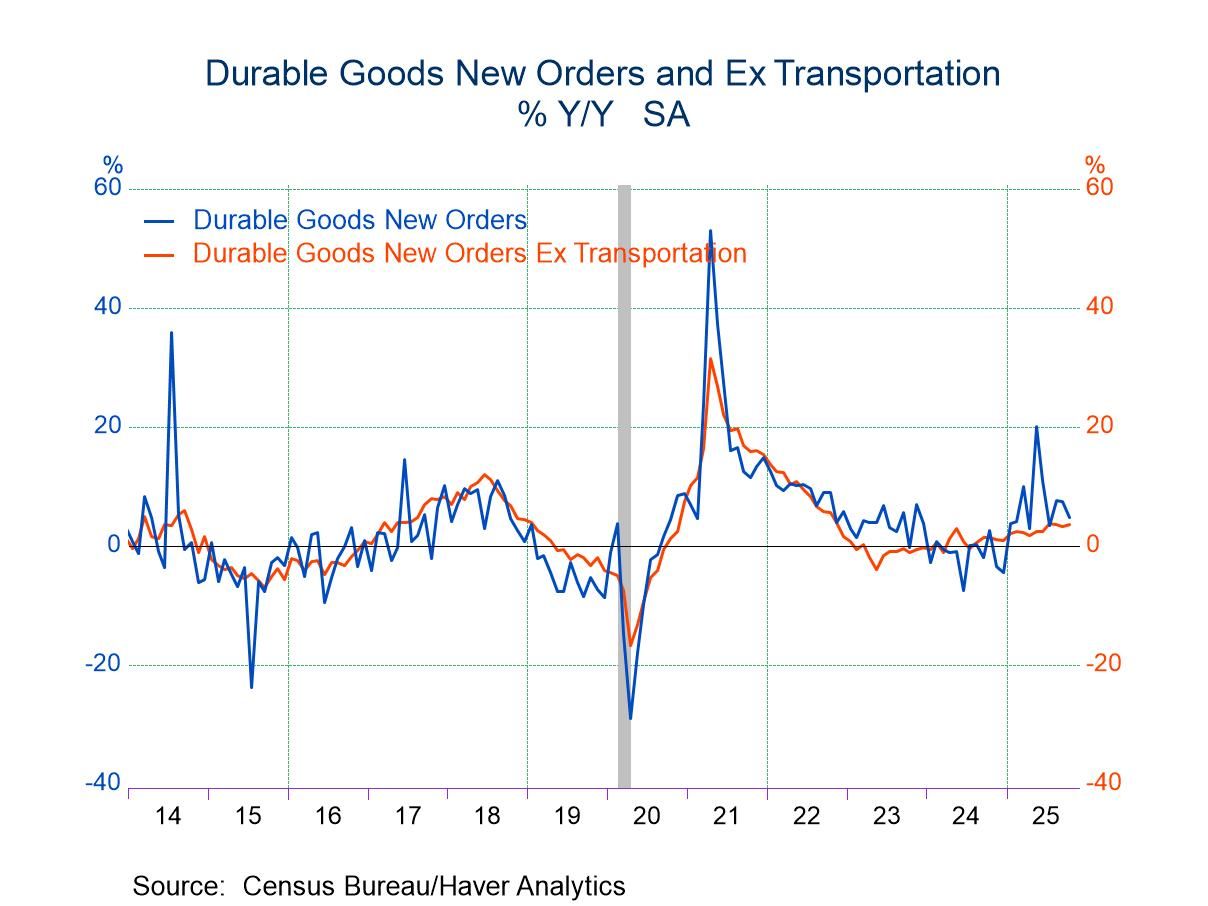U.S. Initial Claims for Unemployment Insurance Hold Steady in Latest Week
by:Tom Moeller
|in:Economy in Brief
Summary
- Initial claims stay on sideways path.
- Continuing claims are little changed; four-week average remains elevated.
- Insured unemployment rate is unchanged.


Initial claims for unemployment insurance remained at 217,000 (-11.4% y/y in the week ended March 2 with the prior week’s level being raised from 215,000. The Action Economics Forecast Survey expected 215,000 initial claims. The four-week moving average of initial claims of 212,250 compared to 213,000 in the prior four week period.
Insured unemployment, also known as continued weeks claimed, rose slightly to 1.906 million (7.0% y/y) in the week ended February 24 from 1.898 million in the prior week. The four-week moving average of 1.888 million compared to 1.878 million in the prior four-week period. Continuing claims in the latest four weeks stand at the highest level since early-December 2021.
The insured unemployment rate was unchanged at 1.3% in the week of February 24. This rate, the number of continuing claims as a percentage of covered employment, has ranged between 1.1% and 1.3% since January 2023.
Insured unemployment rates vary widely across individual states. In the week ended February 17, the highest rates were in New Jersey (2.81%), Rhode Island (2.71%), Minnesota (2.46%), California (2.39%) and Massachusetts (2.37%). The lowest rates were in Florida (0.40%), Tennessee (0.40%), Virginia (0.42%), North Carolina (0.44%) and Kansas (0.45%). Rates in other major states include Illinois (2.21%), Pennsylvania (2.02%), New York (1.99%), Ohio (1.08%) and Texas (1.07%). These state rates are not seasonally adjusted.
Data on weekly unemployment claims are from the Department of Labor itself, not the Bureau of Labor Statistics. They go back to 1967 and are contained in Haver’s WEEKLY database and summarized monthly in USECON. Data for individual states are in REGIONW back to December 1986. The expectations figure is from the Action Economics Forecast Survey in the AS1REPNA database.
The Fed’s latest Beige Book covering regional economic conditions can be found here.


Tom Moeller
AuthorMore in Author Profile »Prior to joining Haver Analytics in 2000, Mr. Moeller worked as the Economist at Chancellor Capital Management from 1985 to 1999. There, he developed comprehensive economic forecasts and interpreted economic data for equity and fixed income portfolio managers. Also at Chancellor, Mr. Moeller worked as an equity analyst and was responsible for researching and rating companies in the economically sensitive automobile and housing industries for investment in Chancellor’s equity portfolio. Prior to joining Chancellor, Mr. Moeller was an Economist at Citibank from 1979 to 1984. He also analyzed pricing behavior in the metals industry for the Council on Wage and Price Stability in Washington, D.C. In 1999, Mr. Moeller received the award for most accurate forecast from the Forecasters' Club of New York. From 1990 to 1992 he was President of the New York Association for Business Economists. Mr. Moeller earned an M.B.A. in Finance from Fordham University, where he graduated in 1987. He holds a Bachelor of Arts in Economics from George Washington University.






